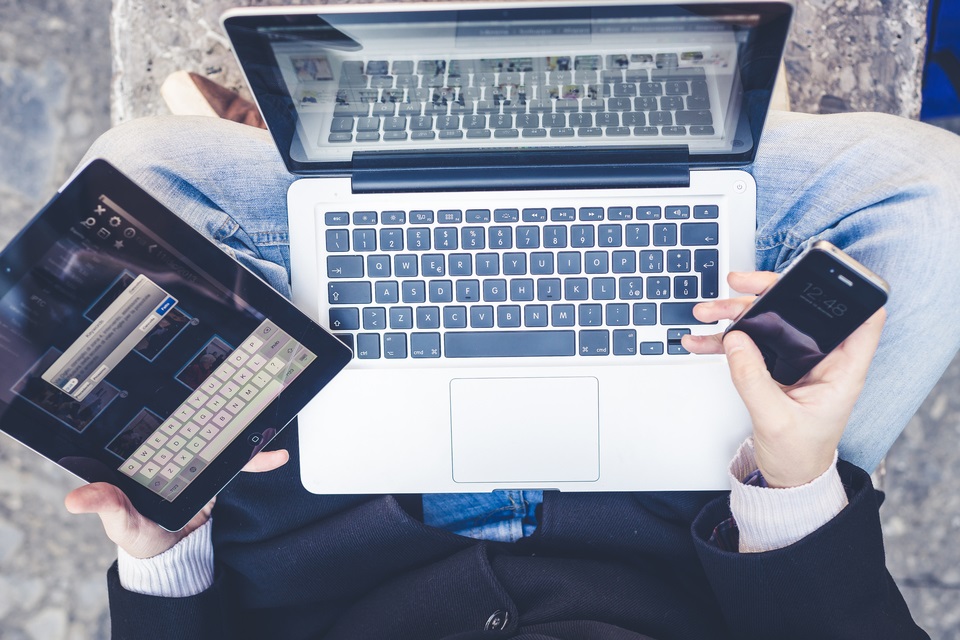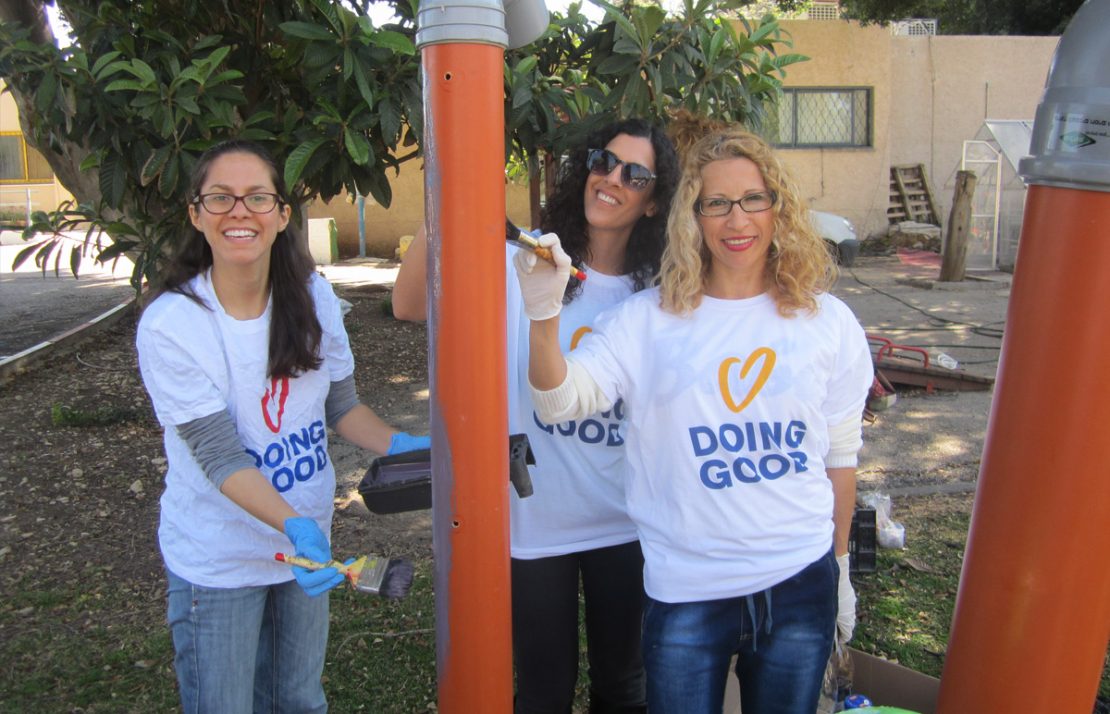
Take a moment and honestly answer the following question about yourself…are you addicted to your cell phone?
If you moved back in your seat, rolled your eyes, got a bit defensive, or immediately thought no, then I want you to take a second, think again, and give these next few questions a try. Remember, be honest with yourself:
- How many hours a day are you on your phone – texting, on Pinterest, playing Candy Crush, etc?
- How many additional hours a day are you actively using a computer, laptop, tablet, kindle, etc?
- How quickly do you check any of these devices after receiving a notification?
Maybe a better question is, how many hours a day are you actively not on your phone? Did you know, that on a daily basis the average American spends over 10 hours in front of a screen. Over 10 hours every day- that’s a lot of time! There are only 24 hours in a day and if you’re one of the lucky ones getting 8+ hours of sleep a night, that means there aren’t many moments of your day (aside from when you’re asleep) that you are in a digital-free space.
Digital overload, the constant stream of information we get through mobile and other devices, has completely taken over our everyday life, both personal and professional. Day and night our eyes move from one screen to the next and although technology has allowed us to innovate how we work, it has also created new ways to distract and prevent us from achieving the task at hand. Even when we want to focus, the ping of new messages, emails, and other notifications are constant and dramatically affect our productivity.
So, let’s revisit the question. Maybe…you do spend a bit too much time on your phone or in front of the computer, I think that most of us fall under this category nowadays – myself included. So if you’re like me, then you can see that we need to make a change, but how can we minimize time on our devices?
The culture of constant connection has brought us to this point and in today’s digital era it is unrealistic to consider turning off your devices as a permanent solution. Still, that doesn’t mean that we can’t fight back and make a positive adjustment to our unhealthy relationship with technology. We have to find ways to control our digital overload and not the other way around. The benefits of reclaiming control on our digital addiction are enormous and good news is you’ve already completed the first step, self-awareness!

Admit It, You’ve Got a Problem
Acknowledging the issue at hand gives us a fighting chance to successfully form a new habit. By addressing our digital distraction, we can now implement tools to keep us from doing things like, scrolling through our Facebook news feeds for the third time in the last 10 minutes.
Take a Break
Turn off your screen- it’s ok to take a break – they are needed sometimes! Sitting in front of any screen for too long isn’t good for you: It can cause eye strain as well as other physical body pains that in the long run can inhibit your overall quality of life. Take a short 10 min walk to stretch your legs, get some fresh air, and clear your thoughts.This mindset switch can be all we need to refresh our attention and when we do come back to the screen we are able to work in a productive manner. These breaks are meant to give you some time to relax and to give your mind and bodies a rest – so when you get up for your break leave your phones at your desks too!
Get a Planner and Work Offline
There are a number of different digital calendars, agendas, and planners to help keep you organized, but to access them you need to get online where the temptation to take a “quick 2 minute” peek on twitter can be overwhelming.
Try getting a planner instead! Physically writing things down actually helps us remember our to-do lists better and it’s offline where the allure of other apps/sites doesn’t exist. The transition is easy -give it a shot!
Scramble the Apps on Your Cell Phone
Our thumbs have become hardwired. Often times I find myself automatically tapping away on my screen, without thinking about where I need to click next, and before I know it, I’ve done a full recap sweep of all of my feeds.
Finger memory leads us to mindlessly get stuck in these loops of refreshing our top apps or news sites. An easy way to help eliminate the mindless scrolling is to scramble the location of the apps on your phone. Changing the location and order of your apps or burying your favorites deep in a folder on your third homepage screen is an excellent place to begin. Now, in order to get to it, you have to stop and think about what you want to pull up and where it is. It may only be an additional 10 seconds, but taking this time to stop and think disrupts the bad pattern and allows you to assess if you really want to open the app in the first place.
Create Non-Digital Space Throughout the Day
If the first thing you do when you wake up in the morning and the last thing you do before you go to bed at night consist of being on your phone, pump the breaks! Waking upsets the mood for the remainder of our day and winding down before bed affects how well we sleep. Create a different routine that separates the process of beginning and ending your day in front of the screen.
Instead of rolling over in bed and scrolling through the morning news, leave your phone on the nightstand and reclaim those 15-20 minutes with something a bit more active. Morning yoga, a light run, meditation, or even making yourself a delicious breakfast are all great ways to wake up your body and mind.
Equally as important is to abandon the myth of “keeping up”. Being up to date on the news or your feeds at all hours of the day is a commitment and this time could be better and more efficiently spent.
You Don’t Need to Be Available 24/7
Just because your phone beeps or a new email comes in, doesn’t mean you need to immediately look at it. Checking the notification, even if you don’t do more than see who/what it is, is still an interruption. It takes time to fully refocus your attention once you’ve been distracted.
For some, switching to silent mode for a few hours is enough to get focused and eliminates the urge to constantly check the phone. For others, silent mode isn’t enough and even though the beeping has been silenced, their hardwired thumbs have Instagram open before the user has a chance to realize what they did.
For those of you out there like this, here is another suggestion. Identify the people in your life who always have the right to interrupt you and set your phone up to reflect that. For example, by giving these people a separate ringtone you are able to differentiate between your spouse or a just a friend calling without even looking up. By creatively labeling our notifications pings we are able to filter the stream of digital overload that is coming our way.
Another idea is to set times throughout the day where you can check your email and other notifications. Some emails are urgent and should be answered in a timely fashion, but by setting up these “checking times” you will not get off-topic or overwhelmed by the constant flow of notifications in your inbox.
Fight Fire With Fire
There are a number of different apps, websites, and other online tools that can help moderate and limit the amount of time you are able to spend browsing your favorite digital distractions. Utilizing these tools during your work hours, and even throughout the day, is an excellent way to stay on top of how much time you are spending and where you are spending it.
A few to check out that we love are:
- RescueTime – a tool that keeps track of your online activity and can also be set to limit your access to websites that you label as distracting and want to spend less time on.
- Forest – a productivity app designed to help people beat their phone addiction, in a unique way. Users earn credits by not using their cell phones and plant real trees around the world with the credits.
- Goodnight Chrome – a chrome extension that automatically turns off the Chrome browser at a time you set every night and turns it back on again at the time you set in the morning.
StayFocusd – a chrome extension that restricts the amount of time you can spend on distracting websites. You set a time limit and once it is finished, the sites you have labeled distracting will be inaccessible until the following day when your clock resets.

Redesigning our relationship with technology in a mindful manner allows us to be more efficient and productive at work and in general more present – instead of being perpetually distracted. It also gives us the opportunity to create better relationships, reduces stress, and can improve our sleep patterns. Technology has opened up a new world, but it’s up to us to use it in a productive and healthy manner.
So, are you ready to find your balance? It’s as easy as downloading one of the above tools, buy yourself a planner, and remove Instagram from the bottom dock on your iPhone home screen. Pick out a few of the ideas above that you think would work best for you and give them a try! Good luck, you’ve got this!
Explore the Good Deeds Day blog for more inspiration!




